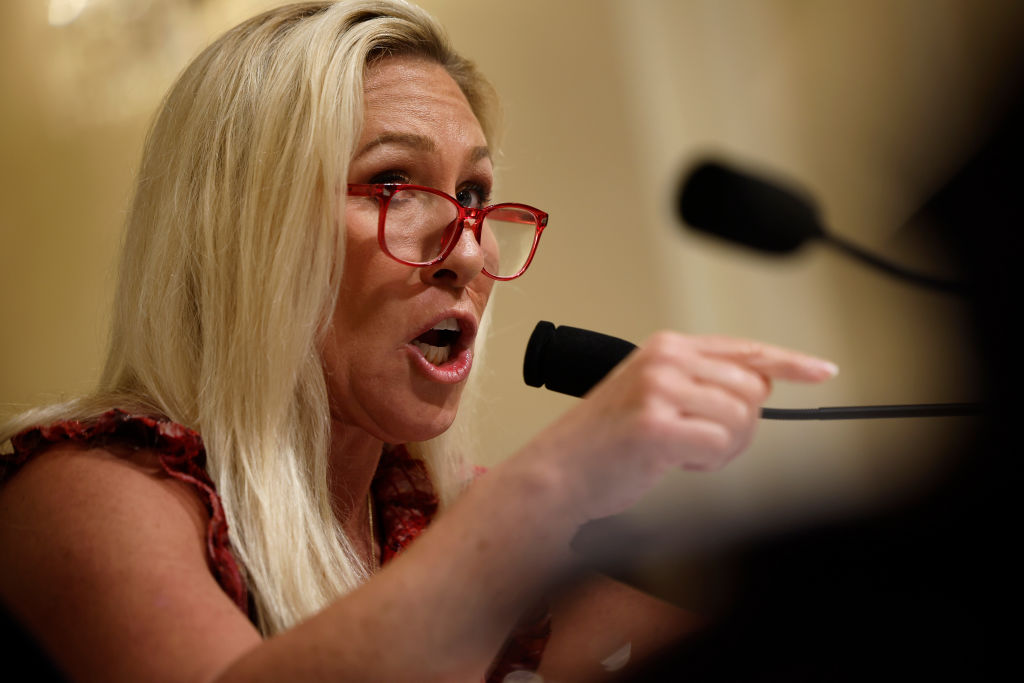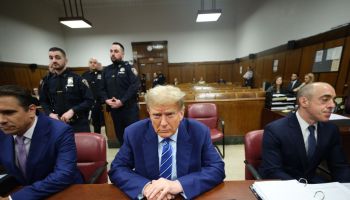WASHINGTON — Republicans and Democrats quickly doled out blame to each other for the first-ever downgrade in the nation’s sterling credit rating, an expected but unsettling move that further clouds prospects for the recovery of the fragile U.S. economy.
The back and forth came after Standard & Poor’s, one of the world’s three major credit rating agencies, cited “difficulties in bridging the gulf between political parties” as a major reason for the downgrade from U.S.’s top shelf AAA status to AA+, the next level down. The rating agency has essentially lost faith in Washington’s ability to work together to address its debt.
The downgrade, hours after markets closed on Friday, is a first for the United States since it was granted an AAA rating in 1917. S&P warned about a downgrade as far back as April. Its decision came just four days after fractious debate over raising the nation’s debt ceiling ended in a compromise that would reduce the country’s debt by more than $2 trillion. S&P said Friday the cuts did not go far enough.
Both political parties used S&P’s report to buffet their policy cases and attack the other side.
House Speaker John Boehner, R-Ohio, said he hoped the downgrade served as a wake-up call to the Democratic Party.
“It is my hope this wake-up call will convince Washington Democrats that they can no longer afford to tinker around the edges of our long-term debt problem,” Boehner said in a statement. “As S&P noted, reforming and preserving our entitlement programs is the `key to long-term fiscal sustainability.”
Senate Majority Leader Harry Reid, D-Nev., while not calling out Republicans by name, said S&P’s action showed that Democrats preferred policy approach – a mix of raising taxes and budget cuts – was the correct way to move forward.
“The action by S&P reaffirms the need for a balanced approach to deficit reduction that combines spending cuts with revenue-raising measures like closing taxpayer-funded giveaways to billionaires, oil companies and corporate jet owners,” Reid said.
At least one senator, Republican Mark Kirk of Illinois, called for the president to bring Congress back from its August recess to try and address the issues raised by S&P’s report.
The White House remained mum on the downgrade early Saturday. President Barack Obama met with Treasury Secretary Timothy Geithner in the Oval Office late Friday afternoon before leaving for a weekend at Camp David.
S&P’s decision, though, clearly angered the Obama administration.
Officials at the Treasury Department fought the downgrade until virtually the last minute. Administration sources familiar with discussions said the S&P analysis was fundamentally flawed. They spoke on condition of anonymity because they weren’t authorized to discuss the matter publicly.
S&P had sent the administration a draft document in the early afternoon Friday and the administration, after examining the numbers, challenged the analysis.
In a statement, Treasury said, “A judgment flawed by a $2 trillion error speaks for itself.”
Potential opponents of the president in 2012 pounced on S&P’s announcement.
Rep. Michele Bachmann, R-Minn., a tea party favorite, called on Obama to fire Geithner and quickly submit a plan to balance the budget, not just reduce deficits. Former Massachusetts Gov. Mitt Romney said the credit downgrade was the “latest casualty” in Obama’s failed economic leadership.
S&P said in its report that downgrading the U.S.’s credit rating reflected the agency’s belief that the debt deal Congress pulled together was not sufficient “to stabilize the government’s medium-term debt dynamics.” S&P said that in addition to the downgrade, it is issuing a negative outlook, meaning that there was a chance it will lower the rating further within the next two years.
A downgrade a notch lower, to AA, will occur if the agency sees smaller reductions in spending than Congress and the administration have agreed to make, higher interest rates or new fiscal pressures during this period.
The downgrade is a psychological blow to an economy that has struggled to recover from the financial tumult of 2008. It came hours after a rare bit of good news, when the U.S. Department of Labor announced the country had added 117,000 jobs in July, exceeding analysts’ expectations. Any optimism from that report was quickly out shadowed by S&P’s announcement.
Whether the downgrade will have a more tangible impact on the economic outlook remains to be seen.
Though widely predicted, S&P’s decision comes at a time when investors already appear spooked by U.S. economic indicators and debt troubles in Europe. The Dow Jones Industrial average fell 699 points this week, the most since the height of the financial crisis in October 2008.
Regulators and the Federal Reserve issued a statement designed to calm investors, saying that the downgrade shouldn’t impact U.S.-guaranteed investments. The statement sought to ensure that banks understood the downgrade would not affect the amount of money that regulators require banks to hold onto against possible losses.
If this week is any indication, S&P’s decision is unlikely to have an impact on how the United States finances its borrowing, through the sale of government-backed bonds, bills and notes.
“Investors have voted and are saying the U.S. is going to pay them,” said Mark Zandi, chief economist of Moody’s Analytics. “U.S. Treasurys are still the gold standard.”
















